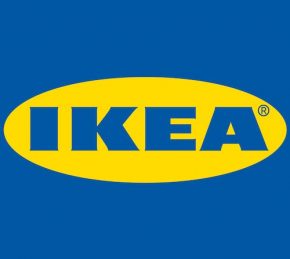
As I entered the bustling reception of the Ikea distribution centre in Peterborough, I could tell that the radios were getting a good workout. Posses of personnel in hi vis jackets bustled in and out, picking up handsets from the desk, or checking them back in.
Simon Payne came to collect me to talk me through the events that prompted Ikea to upgrade the radio communications system. He explained that in March 2006, Ikea took over running the centre from logistics firm, Norbert Dentressangle. Up until then, mobile communications depended on cordless DECT telephones and there were a number of negative aspects.
Physically the phones were fragile as well and at £130 each, or around £100 to fix a broken unit, annual expenditure on telephone hardware was a staggering £20,000.
When Ikea took over the centre, they realised that they needed more people to be in touch as they moved around the property. If they had stayed with DECT phones, this would have meant more handsets, an upgraded switchboard and an extra switch card to allow more users. The problems with personal use and breakages would have remained.
Simon took a look at the Thrapston distribution centre, where they had invested in two way radio, but they had based their purchasing decision primarily on cost and this showed in the performance of the radios and the frequency of breakages. He organised to test similar handsets at Peterborough , but found that they performed poorly in an environment cluttered with warehouse racking and ceiling to floor pallets. It became clear that they needed a performance based solution, so the specification drawn up was based on what was required to cover the property.
The building itself is about 500 metres by 200 metres and the perimeter is another 500 metres away on every side. The core of the facility is know as the Silo. At peak times it holds 75,000 pallets in towers of 12 racks, 18 metres high. Cranes on rails cruise up and down the rows picking up boxes and putting them down on conveyor belts; fork lift trucks perform a mechanised ballet to deliver the right product to the right consignment.
It’s a complex operation and a tough place for radios to work well in.
After a lot of testing of equipment, three dealers came up with three different quotations and specifications. One was based on Motorola, one on Entel and one – from Tranex was based on Kenwood handsets.
Tranex had spent more time than the other dealers in ensuring that the system would work. They had brought in several different bases and aerials and finally decided that their system would have a high gain antenna system with very low loss feeder located 25 metres up on the roof. This would be linked to five talk-through base stations with a ferrite hybrid combiner system in a rack-mount configuration, allowing the use of 5 operating channels in duplex (talk-through). These would boost the signal so it could cope with the massive obstacles caused by the racking, machinery, pallets and product. The handsets specified, were 50 Kenwood TK3202, which were ideal as they are simple to use and immensely rugged. This allowed Tranex to offer a two year warranty on them.
The system was installed in mid 2006 and on commissioning, it was found that coverage of the site was excellent and exceeded expectations. Since then, the whole system has performed well. None of the fixed equipment has failed and only four handsets have been returned. Of these, only one was as a result of a fault rather than abuse.
The figures add up as well. As Simon says, “The installation cost about the same as the annual spend on DECT phones and after two years, we will reckon to be saving between £10,000 and £20,000 annually.”
And that must be the icing on the cake for Ikea.
For more information on this and similar systems, contact Tranex Ltd on 01536 711028 or visit www.tranex.co.uk
For more information on Kenwood two way radios, contact Andy Dawson on 01923 816444 or visit www.kenwood-electronics.co.uk

